Make your own Wayang-Kulit: Indonesian Shadow Puppets
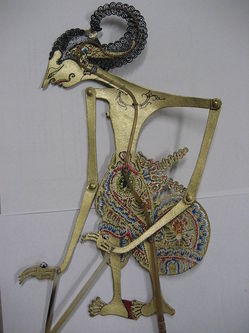
Photo by Masgatotkaca, via Wikimedia Commons
In this activity, you and your child can put on a show with these creative Wayang-Kulit: Indonesian Shadow Puppets.
The History of Wayang-Kulit
In Indonesia, primarily Java and Bali, shadow puppet plays are known as Wayang-Kulit. Wayang is the Indonesian word for "theater" and Kulit means "skin," referring to the buffalo leather used to make traditional puppets.
Puppet Theater emerged with the introduction of Hinduism to Indonesia in the 1st century A.D., and was used to spread the Hindu religion. When Islam started to spread throughout Indonesia, the display of God or Gods in human form was prohibited, so the Wayang style of puppetry was suppressed.
Despite this, puppetry had become very important to Indonesian culture, so Indonesian's changed how they displayed their puppets. Instead of showing the forbidden figures, the puppeteer only displayed the puppet's shadows projected onto a screen lit by oil lamp.
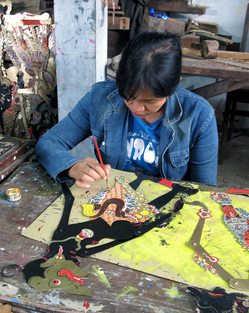
Photo by Flickr user flydime
The stories present tales of mystery, symbolism, morality, and myth. Even though they are hidden behind a sheer screen, the puppets are highly decorated, often with brightly colored paints and shiny accents.
Make Your Own Wayang-Kulit Puppet:
You can make this puppet in: 1 hour
What you will need:
- Cardstock or cardboard from a cereal box
- Scissors
- Pencil
- Paper fasteners (brads)
- Tape
- Hole punch
- Dowels, chopsticks, popsicle sticks, or plastic straws
- Decorative elements, such as crayons, markers, fabric, sequins, yarn, paint, glitter, tissue paper, etc.
- Light-colored sheet and a flashlight or a bright lamp (for performance)
How- To:
Step 1: Draw a character on a piece of cardstock, and then cut it out. If you want the arms and legs to move, cut them separately from the puppet's body.
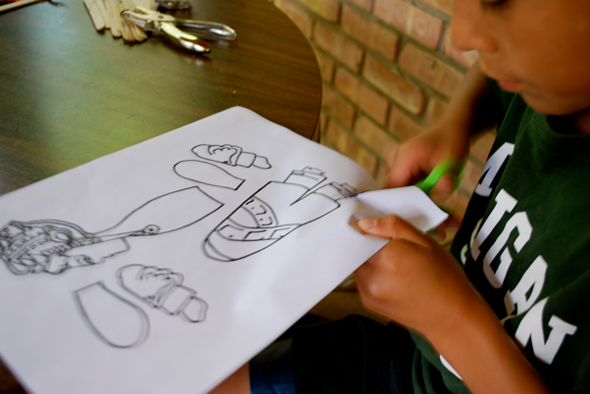
Photo by Ann Arbor Art Center
Step 2: Draw your own design on the puppet's body for detail, and color the puppet as you wish.
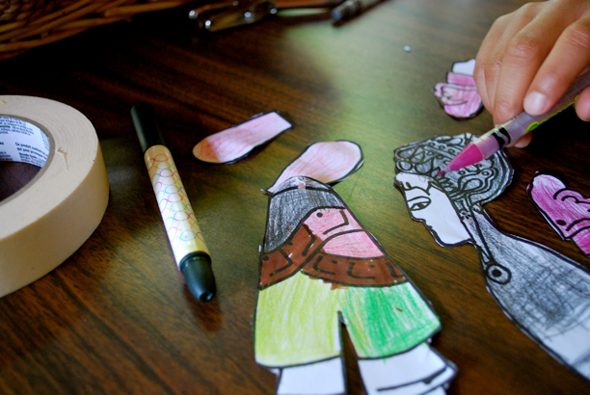
Photo by Ann Arbor Art Center
Step 3: Punch holes in the areas where you want to attach the puppet's arms and legs.
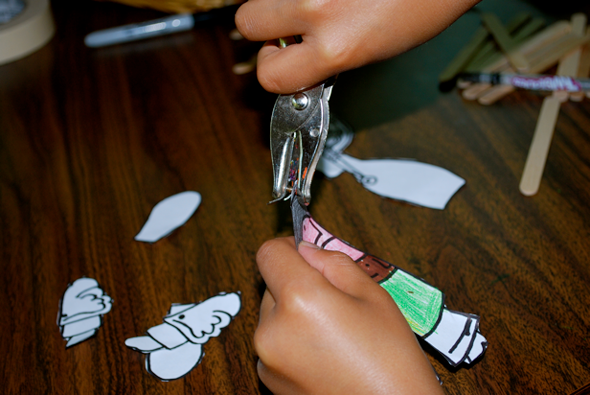
Photo by Ann Arbor Art Center
Step 4: Attach the body parts together using the paper fasteners.
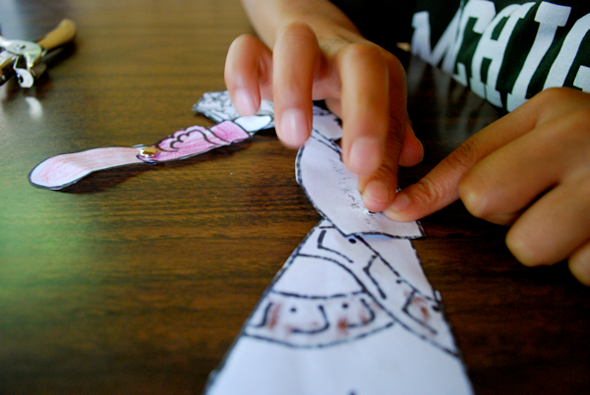
Photo by Ann Arbor Art Center
Step 5: Add decoration to your puppet by attaching feathers, yarn, fabric, sequins, glitter, etc. with glue and tape and then let it dry.
Step 6: If you want, you can punch small holes in your puppet for light to shine through.
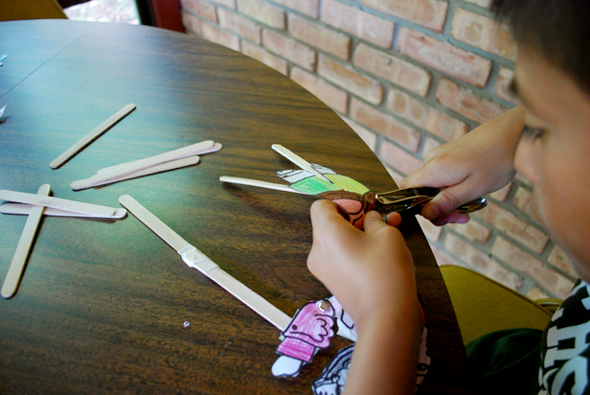
Photo by Ann Arbor Art Center
Step 7: Attach your popsicle sticks to the puppet by taping the sticks to the moving body parts. Place another popsicle stick to the body of the puppet for support.
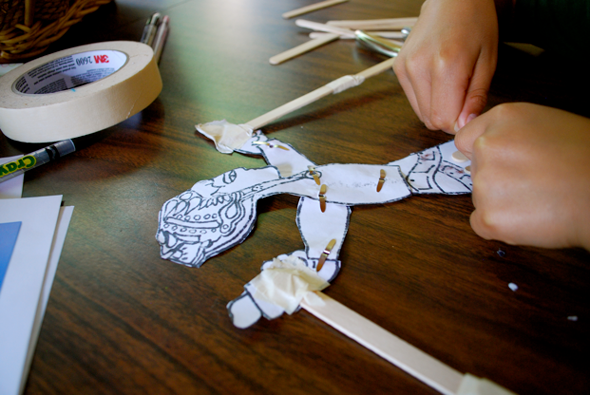
Photo by Ann Arbor Art Center
Step 8: And now, your puppet is finished!
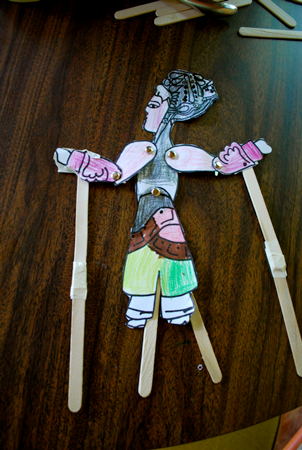
Photo by Ann Arbor Art Center
When you're done with your puppets, put on a Show!
- Hang up a large sheet in a doorway, and secure with tape.
- Shine a strong light source, such as a flashlight, or a bright lamp towards the screen.
- Sitting behind the light, place your puppets close to the screen, so the audience can see the silhouette.
- Use your puppet to tell a story, and maybe even perform a show with a friend!
Think about this:
- What character did you choose to create? Why?
- What story did you decide to tell? Why?
- What stories do you think the Indonesian puppeteers would tell?
- Why do you think they chose to use puppets to tell a story?
To print this activity, please download and save the following PDF to your desktop: Wayang Kulit - Creativity Corner.pdf
See more Creativity Corner articles here.

The Ann Arbor Art Center is a non-profit organization dedicated to engaging the community in the education, exhibition and exploration of the visual arts. Offering studio art classes, workshops, exhibitions, summer camps and more, the Art Center is celebrating over 100 years of being the place where creativity and community meet. For more information please visit www.annarborartcenter.org or stop by the Art Center located at 117 W. Liberty in downtown Ann Arbor.

